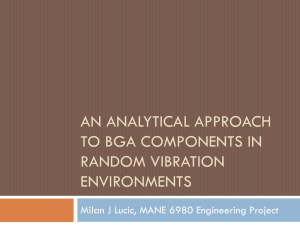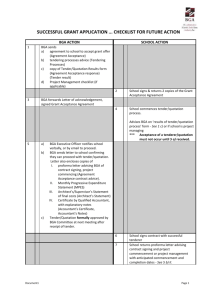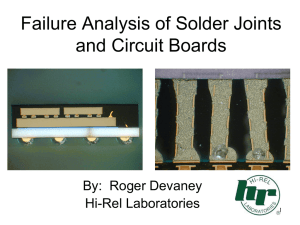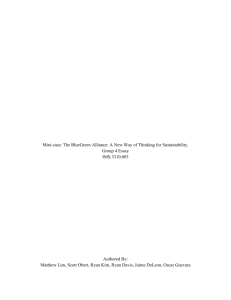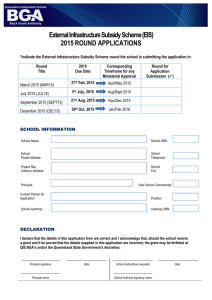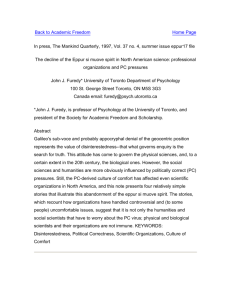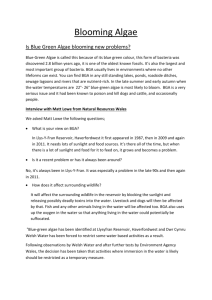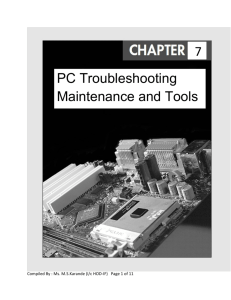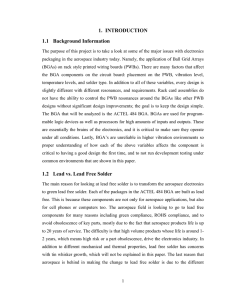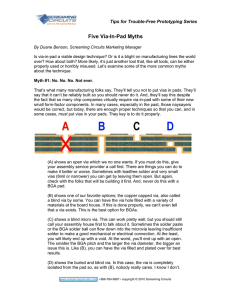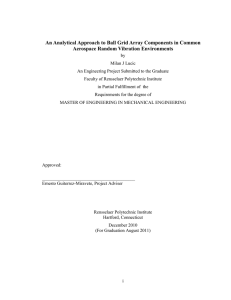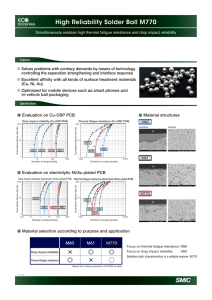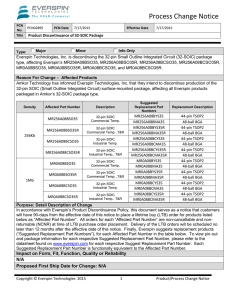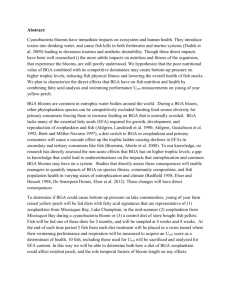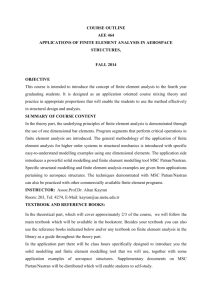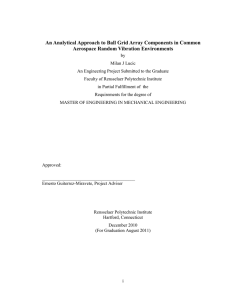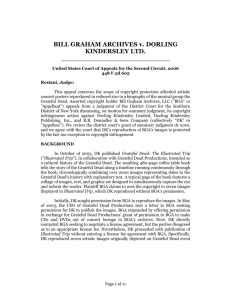An analytical approach to bga components in random vibration
advertisement
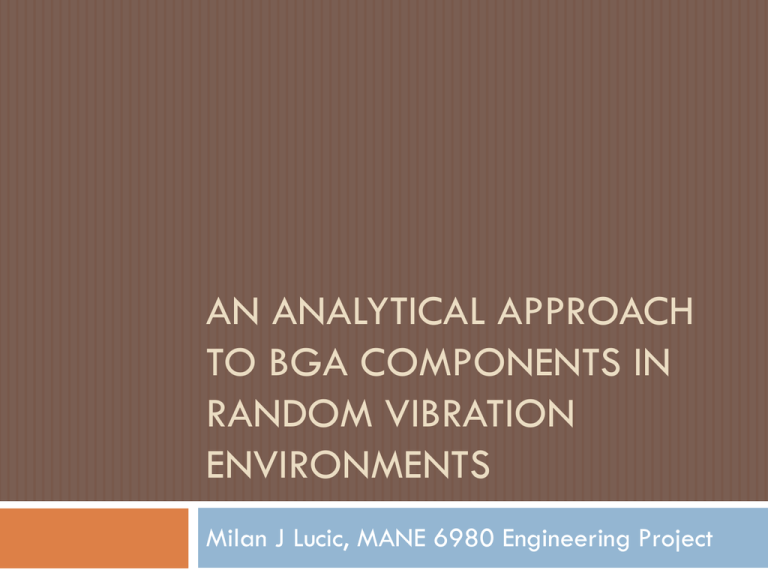
AN ANALYTICAL APPROACH TO BGA COMPONENTS IN RANDOM VIBRATION ENVIRONMENTS Milan J Lucic, MANE 6980 Engineering Project Methodology and Approach Accurately model the ACTEL 484 PBGA with 3-D hex elements (balls and solder joint), and 2-D Shell elements (PCB and component body) Using NX7.5 Advanced simulation for Pre-Processing and MSC PATRAN/MD NASTRAN as the post processor and solver PATRAN Random utility to solve for frequency response (Mode Shapes), displacements, and RMS stresses PATRAN static inertial analysis to solve for stresses of BGA’s Greatly reduce analysis time! Using hand calculations, solve for the Miner’s Damage Index of electrical components and the high cycle fatigue of the BGA components. Expected Outcomes To develop a better understanding of lead vs. lead free BGA components used in common Aerospace environments Correlate data with actual industry test data to refine future models Greatly reduce risks early in the design phase Eliminate the need for development testing of BGA components (expensive and time consuming) Generate plots of high cycle fatigue life for lead vs. lead-free BGA components Project Progress-FEA Model Pin Grid Snapshot BGA Model ACTEL 484 PGA Solder Ball and Solder Joint FEM Project Progress-FEA Model Boundary Conditions: Interconnect Fixed Edge (6DOF) (Card Guide) Connectors b a Fixed Edge (6DOF) (Card Guide) Fixed Edge (6DOF) Free Edge a Finite Element Analysis-Hand Calcs E * h3 D 12* (1 2 ) Plate Stiffness Factor First Mode Natural Frequency D .75 2 12 f n 4 2 2 4 a 3 a b b GRMS G Single Amplitude Displacement Z RMS 2 * P * Q* f n 9.81* G fn2 Curve C Calculated Results: fn =266.4 Hz ZRMS = .0018 inches Finite Element Analysis-Normal Modes Mode 1: 266.59 Hz Mode 2: 341.07 Hz Mode 3: 511.18 Hz Finite Element Analysis-Random Mode 1 Mode 2 Input Curve Frequency Response RMS Displacement Mode 3 Finite Element Analysis-Optimization Optimized Size: 570 Elements (Quad 20) Project Schedule Week 1: Develop Project Definition Week 2: Preliminary Project Proposal Week 3: Project Proposal Week 4: FEA Model Development/Research Week 5: Random Analysis/Model Refinement Week 6: Random Analysis/Model Optimization Week 7: Random Analysis/Model Optimization, First Progress Report Week 8: MDI Calculations/Random Analysis Week 9: Inertial Analysis Week 10: Post Processing, Second Progress Report Week 11: Post Processing (extra time for model refinement) Week 12: Final Report Draft Week 13: Final Report Draft Week 14: Final Report

